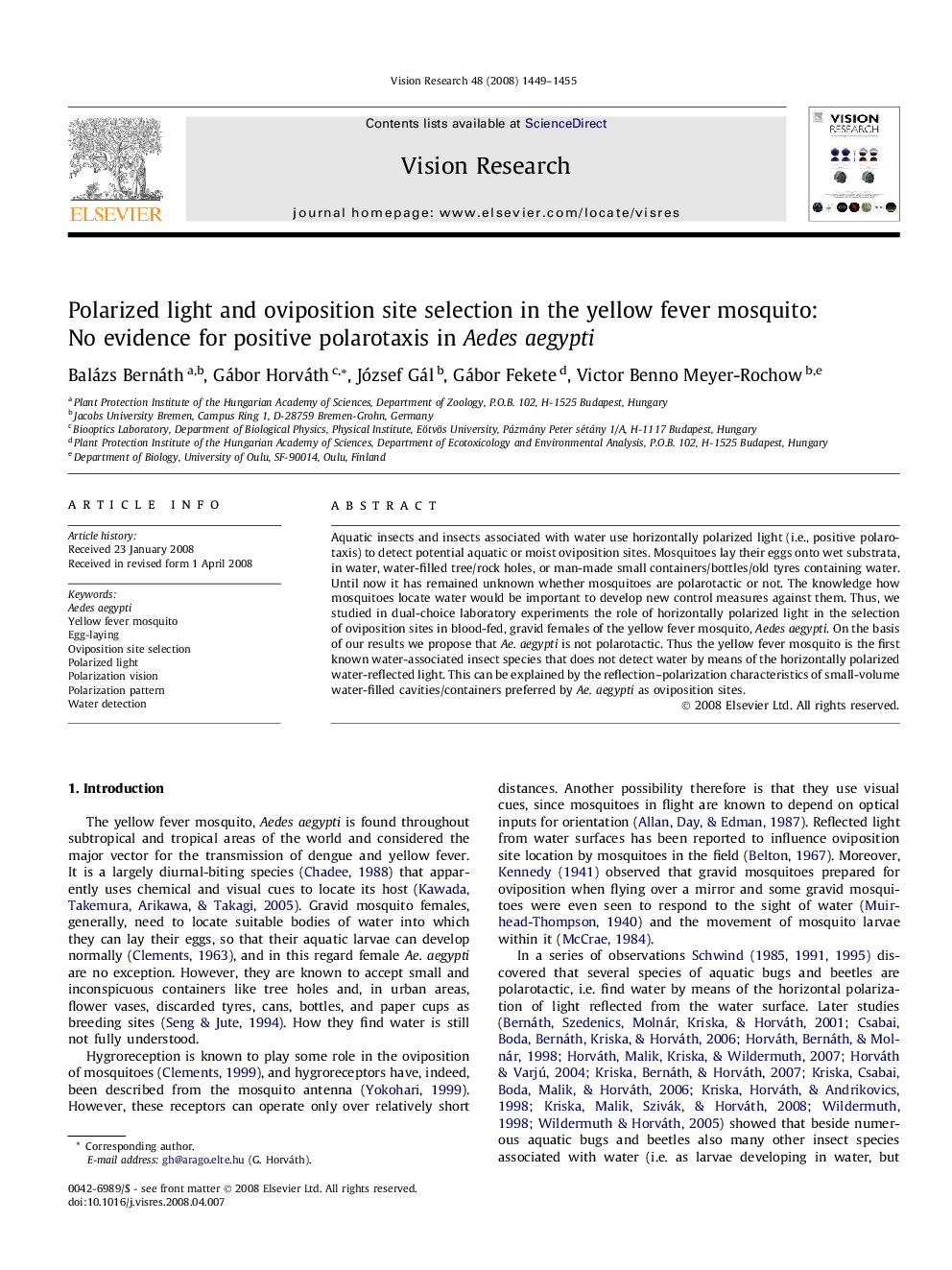| Article ID | Journal | Published Year | Pages | File Type |
|---|---|---|---|---|
| 4035091 | Vision Research | 2008 | 7 Pages |
Aquatic insects and insects associated with water use horizontally polarized light (i.e., positive polarotaxis) to detect potential aquatic or moist oviposition sites. Mosquitoes lay their eggs onto wet substrata, in water, water-filled tree/rock holes, or man-made small containers/bottles/old tyres containing water. Until now it has remained unknown whether mosquitoes are polarotactic or not. The knowledge how mosquitoes locate water would be important to develop new control measures against them. Thus, we studied in dual-choice laboratory experiments the role of horizontally polarized light in the selection of oviposition sites in blood-fed, gravid females of the yellow fever mosquito, Aedes aegypti. On the basis of our results we propose that Ae. aegypti is not polarotactic. Thus the yellow fever mosquito is the first known water-associated insect species that does not detect water by means of the horizontally polarized water-reflected light. This can be explained by the reflection–polarization characteristics of small-volume water-filled cavities/containers preferred by Ae. aegypti as oviposition sites.
